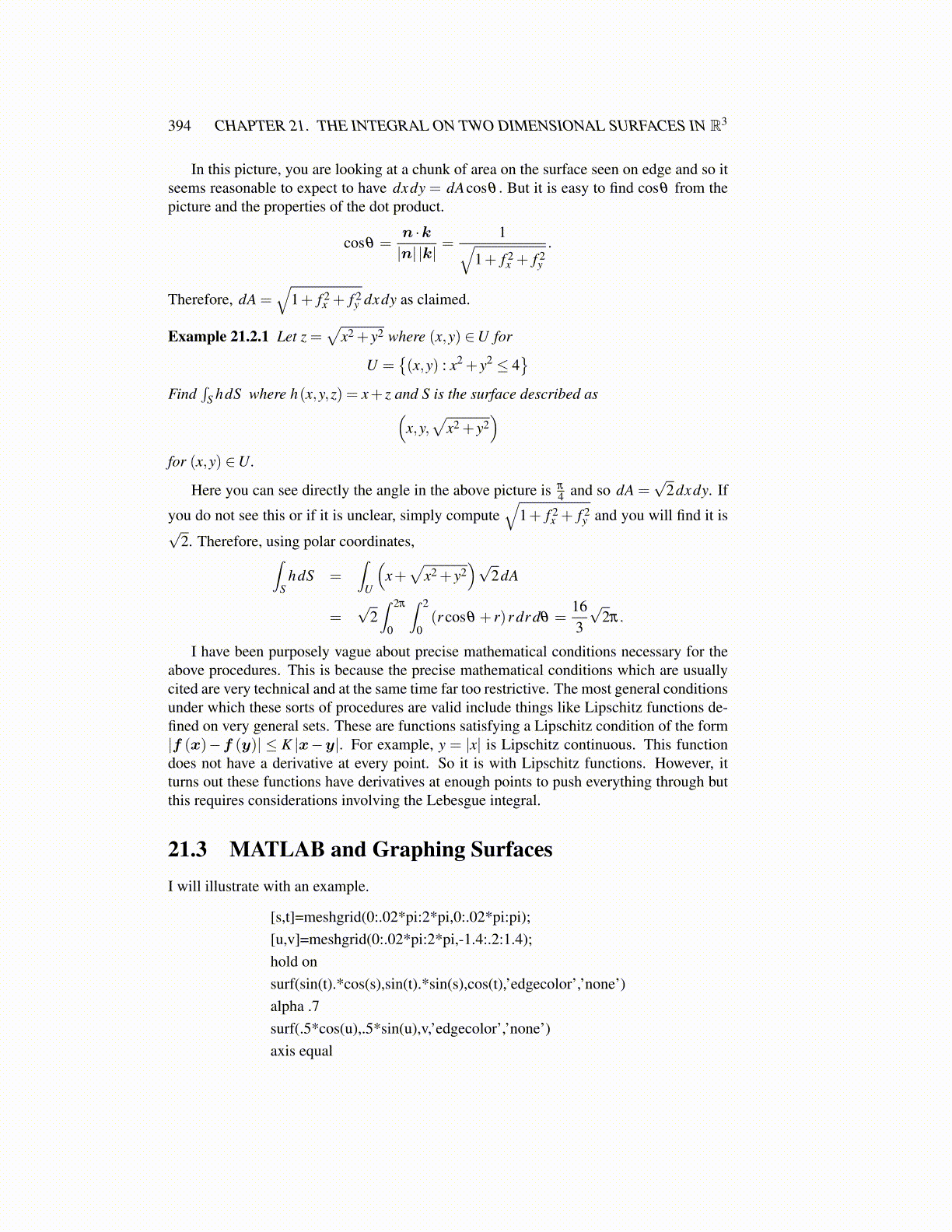
394 CHAPTER 21. THE INTEGRAL ON TWO DIMENSIONAL SURFACES IN R3
In this picture, you are looking at a chunk of area on the surface seen on edge and so itseems reasonable to expect to have dxdy = dAcosθ . But it is easy to find cosθ from thepicture and the properties of the dot product.
cosθ =n ·k|n| |k|
=1√
1+ f 2x + f 2
y
.
Therefore, dA =√
1+ f 2x + f 2
y dxdy as claimed.
Example 21.2.1 Let z =√
x2 + y2 where (x,y) ∈U for
U ={(x,y) : x2 + y2 ≤ 4
}Find
∫S hdS where h(x,y,z) = x+ z and S is the surface described as(
x,y,√
x2 + y2)
for (x,y) ∈U.
Here you can see directly the angle in the above picture is π
4 and so dA =√
2dxdy. If
you do not see this or if it is unclear, simply compute√
1+ f 2x + f 2
y and you will find it is√
2. Therefore, using polar coordinates,∫S
hdS =∫
U
(x+√
x2 + y2)√
2dA
=√
2∫ 2π
0
∫ 2
0(r cosθ + r)r dr dθ =
163
√2π.
I have been purposely vague about precise mathematical conditions necessary for theabove procedures. This is because the precise mathematical conditions which are usuallycited are very technical and at the same time far too restrictive. The most general conditionsunder which these sorts of procedures are valid include things like Lipschitz functions de-fined on very general sets. These are functions satisfying a Lipschitz condition of the form|f (x)−f (y)| ≤ K |x−y|. For example, y = |x| is Lipschitz continuous. This functiondoes not have a derivative at every point. So it is with Lipschitz functions. However, itturns out these functions have derivatives at enough points to push everything through butthis requires considerations involving the Lebesgue integral.
21.3 MATLAB and Graphing SurfacesI will illustrate with an example.
[s,t]=meshgrid(0:.02*pi:2*pi,0:.02*pi:pi);[u,v]=meshgrid(0:.02*pi:2*pi,-1.4:.2:1.4);hold onsurf(sin(t).*cos(s),sin(t).*sin(s),cos(t),’edgecolor’,’none’)alpha .7surf(.5*cos(u),.5*sin(u),v,’edgecolor’,’none’)axis equal